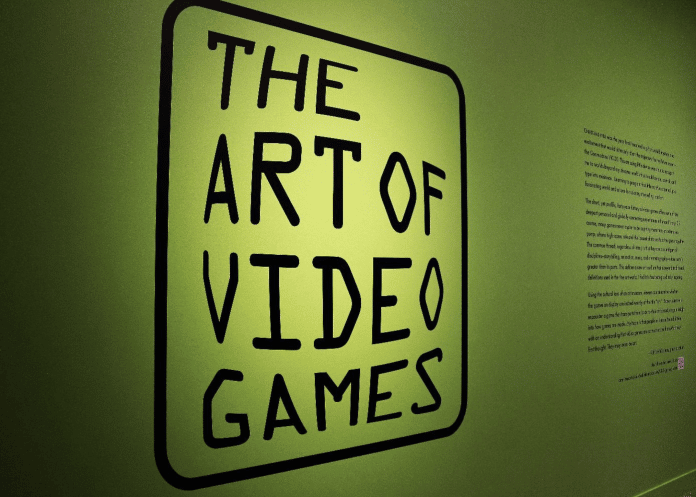Time and time again, a question arises. Can video games be considered art? With ever-so-stunning graphics and complex storylines venturing into bold narrative territories, video games have definitely evolved as a distinctive art form. From dystopian environments to fantasy worlds, imagination is the only limit to developers and game artists. But many games also draw inspiration from classical arts to fuel their creativity. So, are you an art enthusiast? Here are some suggestions to delve into the deep connexion between art and gaming.
Credit: Hallion – Flickr
Ōkami – Japanese ukiyo-e
Developed by Clover Studio, Ōkami is a solid reference for games as an art form. Upon its release in 2006, critics lauded its breathtaking visuals influenced by traditional Japanese ukiyo-e art. Ukiyo-e, which poetically translates as “pictures of the floating world,” flourished in Japan from the 17th to the 19th centuries. Artists produced woodblock printings celebrating Japanese landscapes. Additionally, Edo painters depicted female beauties, kabuki actors, and folk tales. Since it focuses on Japanese mythology and folklore, it was natural for Ōkami to model itself after prominent artists like Katsushika Hokusai and Utagawa Hiroshige. Beyond its beautiful backgrounds, the game further paid homage to traditional calligraphy through the Celestial Brush feature lent from sumi-e brush painting.
Credit: violence day – Flickr
Aviary Attorney – French caricatures
Much like the Ace Attorney franchise, Aviary Attorney embarks players on a journey alongside a lawyer investigating crime scenes and defending his clients in court. However, this indie game sets in 1848 Paris. On the verge of the February Revolution, the French capital is inhabited by anthropomorphic animals. To bring these quirky creatures to life, developers drew on public domain artwork by French caricaturist J.J. Grandville. The soundtrack also uses Camille Saint-Saëns’ light-hearted musical suite, The Carnival of the Animals. With a narration blending historical events and period arts, this action-adventure game proves an endearing trip back in time.
Credit: Aleks Dohorovich – Flickr
Ico – Italian metaphysical paintings
Brought by visionary designer Fumito Ueda in 2001, Ico quickly reached cult status. This minimalist puzzle-platformer was praised for its mesmerizing art style, which borrowed from the works of Italian surrealist artist Giorgio de Chirico. The game’s European and Japanese box art even stemmed from Chirico’s The Nostalgia of the Infinite, while the title’s last three letters might pay deliberate tribute to the Italian master of metaphysical art. And Ico influenced several video games with its simple yet brilliant visual design. From The Last of Us to Prince of Persia and The Legend of Zelda, Ico’s legacy lives on through best-selling video games. Film directors like Guillermo del Toro also cited Ueda’s work as part of their creative influence.
Credit: David – Flickr
Video games and cinema inspiration
Cinema may arguably be the most popular art form of our time. And the movie industry has largely shaped the gaming landscape. The influence of legendary animator Hayao Miyazaki oozes from the Final Fantasy Series to Ni No Kuni. Recent entries like Moon Studios’ Ori and the Blind Forest even nodded to Studio Ghibli’s works with their Valley of the Wind level reminiscent of Nausicaä. Movie-derived video games also made their mark on gamers. GoldenEye 007, for example, remains to this day one of the highest-rated games of all time. With their thrilling gambling scenes, Bond flicks may also have revived the iGaming hype. So, players can indulge in UK casino table games in Bond fashion. Top online platforms boast dozens of timeless games, such as poker, baccarat, and roulette. Gamblers might opt for free sessions or try to hit the jackpot with real money games. And juicy bonuses like cashback rewards and free spins only add to the perks of online casinos.
Credit: PlayStation.Blog – Flickr
Thomas Was Alone – European abstract art
It might have been a long shot for a puzzler revolving around rectangular shapes to find critical and public success. Yet, Mike Bithell’s debut game accomplished just that. In this indie classic, players take control of artificial intelligence entities boasting unique names and personalities. The game’s eponymous character, Thomas, takes the form of a simple red rectangle. While the entry’s visuals may have looked simplistic, its design finds inspiration in one of the most acclaimed artists of the 20th century. A pioneer of abstract art, Dutch painter Piet Mondrian notably influenced the game’s design aesthetics with works such as Large Red Plane and Blue from 1921.







